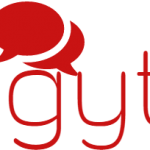Many times early childhood teachers feel overworked and overwhelmed by the duties of day to day child care and teaching young children. Working with active and inquisitive minds can sometimes try one’s patience. To keep teachers fresh and show appreciation for all that they do, setting up regular staff incentives and ways to individually recognize those top employees is a great way to keep morale up in any child care setting.
No Cost Employee Appreciation Ideas
Many child care centers and preschools run on a tight budget. Here are some motivational tips that cost nothing but a little bit of time.
- Drawing for secret observers. Each month staff members draw another employees name. For the month, they observe and record the person and note exceptional things the person does – whether it be interactions with the children, parents, community, or co-workers. At the next staff meeting, these notes are shared with the other staff members.
- Write a motivational note. With each paycheck, the director can handwrite a personal note to be enclosed. Ideas include a personal note of appreciation, a noted accomplishment during the pay period, a thank you for dedication to the program, or an observation of something special the employee did during the past couple of weeks.
- Prepare and display a staff appreciation board. Fill a bulletin board in the entry way of the center with the provider’s pictures and some positive affirmations. Display a few antidotes about each staff member. Encourage parents to add their own “warm fuzzies” to the board.
Incentives that Cost Just a Little
Sometimes more than time is necessary. Here are a few that involve parents as well as a little bit of money.
- Hold a “Garden Party” with parents assistance. Each spring, after a long and cold winter, parents bring in flats of flowers, herbs, vegetables, trowels, gloves, clay pots, and seed packets to share with the staff. Some can even share gardening tips. It is a great way for parents to say, “Thank you for having such wonderful talents for making things grow!”
- Send an employee to another center. By allowing staff to visit other child care facilities they learn how centers differ. They can also pick up on some really good ideas to share at their home center. Either the director (or a substitute) fills in for an employee for a few hours to allow for a good period of observation time. For part-time staff a couple of extra hours of pay could work the same way.
- Treat the staff to lunch with the director. Another really great incentive is to take each staff member out for lunch instead of eating with the children or on their own. Chose a nice, quiet restaurant and take an hour to enjoy lunch with one employee each month. Perhaps this can be during the birthday or other special occasion months for the child care provider.
Spending a little bit of time and effort to show appreciation for staff pays itself back immediately. Letting each child care provider know that they are special and truly appreciated for their individuality and what they bring to the lives of the children and the center is one of the directors most important job responsibilities. By showing gratitude and respect to them, it comes straight back to the program and the director. This adds positive feelings amongst all staff and the children and families will certainly benefit from the positive environment.
Knowledge Management Involves Sharing Insights
It is the insights gained during actual business (or non-profit) operations that make an organization able to function effectively. It is these insights from experience that we call knowledge and its management involves organizing the knowledge and making it available to employees who need it.
Management of Knowledge
In a practical context, knowledge can be seen as the acquired skill to complete a task successfully. For example, an organization learns from experience things like:
- How to make a product at a minimal cost
- How to distribute the product efficiently and effectively to its users
- How to get employees work with commitment to the organizational goals
- How to improve organizational performance using techniques like knowledge management
Knowledge can be tacit or explicit. It is tacit when it is internalized by an individual to a degree that the person is not really aware he has some special knowledge. This internal know-how helps the person execute specific tasks successfully. However, if called upon to explain how he does the task so well, the person might find himself at a loss to put it in words.
Explicit knowledge consists of things its possessor is clearly aware of, and consciously uses in executing tasks. This can be easily communicated to others if needed.
Managing knowledge is to a large extent converting the tacit knowledge into explicit knowledge that can be shared in the organization. The explicit knowledge must then be internalized by the learners to produce desired results. Management of knowledge is an essential part of management development in an organization.
Knowledge Management Practices
Knowledge management (KM) is not something that is new. It has existed even earlier in such forms as:
- Formal apprenticeships
- Discussing the work on-the-job
- Case study of management practices
- Performance improvement studies and practices
What is new is the extensive use of Information Technology in KM. Modern knowledge systems enables knowledge transfer to employees in a systematic manner. IT applications include:
- Use of computers to collect, organize and retrieve knowledge acquired by an organization
- Expert software that can be consulted for answers and guidance in particular fields
- Improved collaboration technologies such as Group Decision Support Systems
- Implementation of Intranets for storage and distribution of information generated all over the organization
Benefits of Knowledge Management
KM typically has the objectives of:
- Improving overall organizational and individual functional performance
- Gaining a competitive advantage
- Successful innovation management
- Sharing the lessons learned from experience across the whole organization
Successful KM can:
- Eliminate the wasteful and common practice of ‘reinventing the wheel’
- Minimize redundant work, another common problem
- Speed up training of employees
- Retain intellectual capital even if an employee with high-value knowledge leaves
- Make adaptation to changing markets and environments an efficient process
Knowledge management seeks to share the accumulated insights gained through experience by an organization among its employees, thus leading to more effective practices and eliminating many wasteful ones. Case studies, use of IT and the Intranet, and creation of a knowledge base and expert software are some of the ways that organizations use for the purpose.





